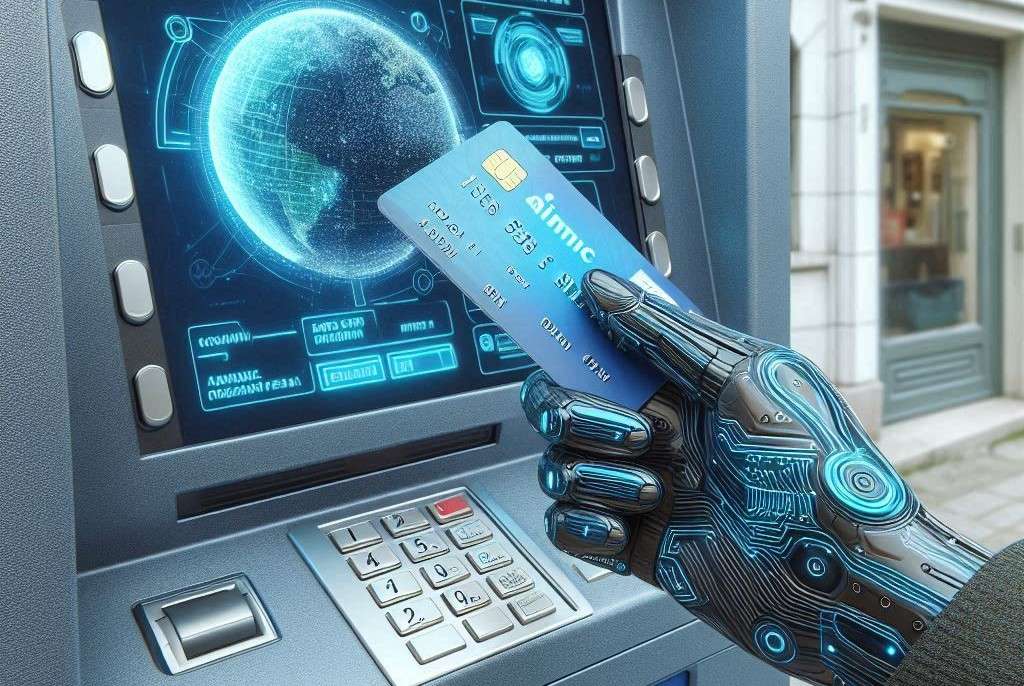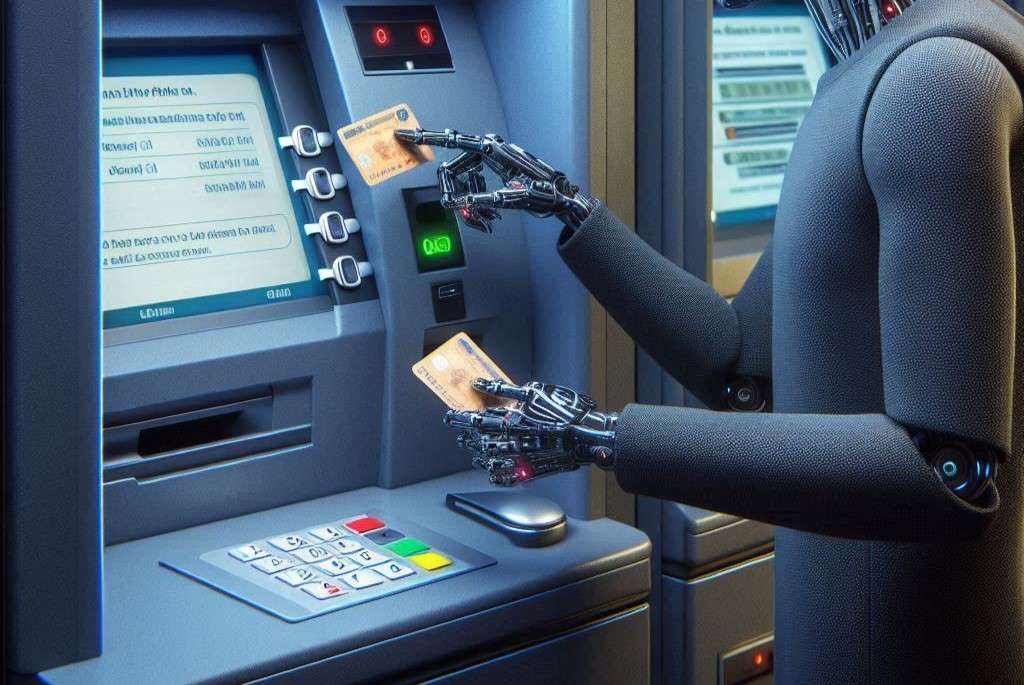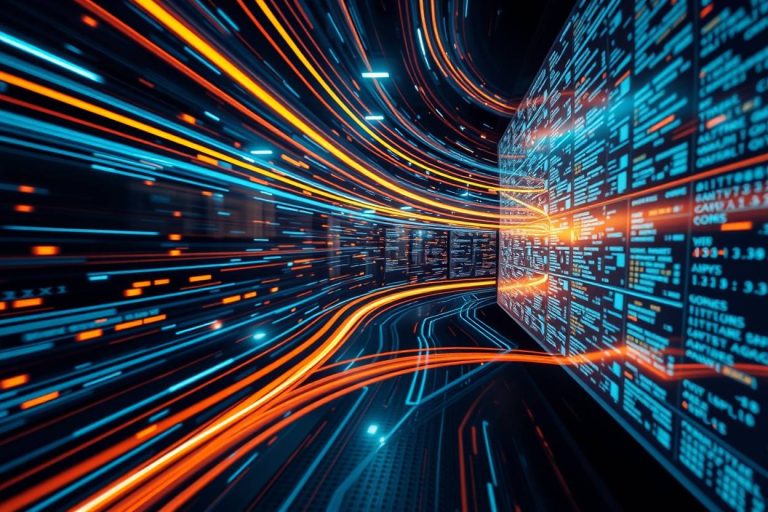AI in credit card payment processing: smarter, safer and quicker payments

Credit card fraud is rising fast, and chances are, you or someone you know has felt its impact. Global fraud losses are projected to hit $35.67 billion in 2023, and in the U.S. alone, consumer losses have surged to over $10 billion this year—a 14% jump from last year.
AI is at the center of this issue. On one hand, it’s improving fraud detection, spotting unusual transaction patterns in real time and catching fraudulent activity before it hits your account. But it’s also a tool for cybercriminals. Hackers are now using advanced AI algorithms to automate and scale attacks, making fraud more sophisticated and harder to detect with traditional security.
Today, as fraud tactics grow more complex, AI’s role in credit card payment processing is essential for keeping your transactions safe. With new AI-driven systems, banks and credit card companies can reduce false alerts and catch fraud accurately—helping protect your accounts and financial peace of mind.
Key Takeaways
- AI Enhances Fraud Detection: AI systems analyze transaction patterns to detect and prevent fraudulent activities in real-time.
- Improved Accuracy: AI reduces false positives and negatives, ensuring legitimate transactions go through smoothly while blocking fraud.
- Adaptive Learning: AI learns from new data, staying ahead of fraud tactics and enhancing security.
- Operational Efficiency: AI automates credit card processing, streamlining operations and reducing processing times.
- Enhanced Customer Experience: By minimizing fraud and errors, AI creates a more secure and reliable payment experience for consumers.
How AI detects credit card fraud in real time
AI has changed the game in credit card payment processing by adding layers of security that are both fast and adaptable. So, how does it work?
AI fraud detection relies on pattern recognition and anomaly detection. Imagine that every time you make a purchase, AI is analyzing it against your usual spending patterns. Over time, it builds a profile based on where you shop, how much you spend, and even the time of day you typically make purchases. This baseline helps it spot unusual activity, like a sudden high-value transaction abroad.
When it detects something out of the ordinary, the system flags it instantly, often before the transaction is approved. In fact, AI can scan and analyze thousands of data points in milliseconds, making it far more effective than traditional methods, which rely on fixed rules and manual checks.
Key AI fraud detection technology
Let’s break down the main types of AI used in fraud detection and why they’re effective.
Machine learning models
Machine learning is a core component of AI in fraud detection. Here’s how it helps:
- Supervised Learning: In supervised learning, AI models are trained on data labeled as “fraudulent” or “legitimate.” The system learns from these examples, identifying patterns associated with fraud—such as multiple transactions in different locations within minutes—and applies this knowledge to spot fraud in real-time.
- Unsupervised Learning: Unsupervised learning identifies new and unknown types of fraud by spotting unusual patterns. This is important because fraud tactics are always evolving, and unsupervised learning lets the system detect behavior that hasn’t been seen before.
- Neural Networks: These complex models mimic the way the human brain processes information. They find complex relationships in data, such as the connection between the type of item purchased and the likelihood of it being fraudulent.
Predictive Analytics
Predictive analytics estimate the risk of fraud before a transaction even happens. Each transaction is assigned a risk score based on past data, like your spending history or the usual activity associated with your account. Higher scores indicate a higher likelihood of fraud, so if a transaction looks risky, the system can either flag it for review or block it outright.
This ability to predict fraud allows banks to take preventive action, which means they can protect your account before the damage is done, reducing headaches and loss.
Real-world AI solutions in credit card processing

AI-driven fraud detection isn’t just theoretical—it’s being used right now by most payment processors.
Visa’s VAAI score
Visa has developed the Visa Account Attack Intelligence (VAAI) Score, an AI tool specifically designed to tackle enumeration attacks. These attacks happen when fraudsters use automated scripts to guess valid card details, testing different combinations until they find one that works. This tactic is highly damaging, leading to major financial losses and operational issues for banks and consumers alike.
Visa’s VAAI score tackles this by:
- Real-Time Risk Scoring: Every transaction is given a risk score in just 20 milliseconds, allowing Visa to assess and respond almost instantly.
- Learning from Billions of Transactions: The system is trained on more than 15 billion VisaNet transactions, giving it a vast amount of data to recognize subtle fraud patterns that humans would miss.
- Reducing False Positives: By targeting specific indicators of enumeration, VAAI reduces false positives (legitimate transactions incorrectly flagged as fraud) by up to 85%.
Mastercard’s Decision Intelligence and Biometric Cards
Mastercard uses AI-driven fraud solutions that focus on minimizing legitimate transaction declines while enhancing security.
- Decision Intelligence: This system uses thousands of data points for each transaction to provide a real-time risk score, helping card issuers decide when to approve or decline. It reduces false declines by allowing genuine transactions to proceed without delays.
- Biometric Cards: Mastercard has also introduced biometric cards, which use fingerprint data to verify the cardholder’s identity in-store. This technology eliminates the need for PINs or signatures, adding a personal layer of security that makes it much harder for anyone else to use the card.
How AI protects you in everyday transactions
AI’s impact goes beyond just preventing fraud. Here’s how it enhances the everyday experience for credit card users:
- Improving Customer Experience
AI is highly accurate, which means fewer “false alarms” on your transactions. Imagine making a large purchase on vacation only to have your card declined—AI reduces these disruptions by learning your habits, making your transactions smoother. - Real-Time Protection
One of AI’s biggest strengths is speed. Fraud detection that once took hours or even days now happens in seconds, which is key in blocking unauthorized purchases. - Lower Costs for Banks and Businesses
Every fraudulent transaction comes with costs—chargebacks, customer service, and card replacement fees. By catching fraud early, AI saves banks and businesses millions each year.
How AI-driven fraud detection protects your privacy
A major benefit of AI in fraud detection is that it doesn’t rely on your personal data alone. It combines individual transaction data with broader trends, so while it knows your habits, it doesn’t need to collect excessive personal information. This balance between privacy and protection is a crucial advantage of AI technology in credit card payment processing and e-commerce financial transactions.
If you prefer a more balanced approach between privacy and security – PayTower, a leading payment solutions provider, emphasizes efficiency, reliability, and security in its services. The company focuses on “fortified security” to protect financial transactions from external threats and fraud.
The future of AI in credit card payment processing

As fraud techniques become more advanced, AI is expected to evolve just as quickly. Here are some trends that could shape the future of fraud prevention:
- Use of biometric data: Fingerprint and facial recognition are already making inroads, and we can expect biometric verification to become more widespread. This will add an extra layer of security that’s harder for fraudsters to bypass.
- Behavioral biometrics: This technology, which uses unique behaviors like how you type or hold your phone, can add subtle layers of security. AI can detect these personal habits, making it difficult for anyone else to imitate your actions.
- Blockchain and AI integration: Blockchain technology could be used alongside AI to create even more secure transactions by making data tamper-proof. Combining these technologies could allow for highly secure, traceable transactions with lower fraud risk.
- Proactive fraud prediction: AI’s predictive analytics will continue to improve, allowing payment processors to identify high-risk accounts and proactively monitor them. This “early warning” system could help block fraud attempts before they even happen.
Conclusion: Why AI matters for your financial security
In a world where fraud is getting more sophisticated by the day, AI offers a vital shield for consumers and financial institutions. From detecting suspicious patterns to blocking fraud in real-time, AI-powered systems provide a strong defense without compromising the convenience of using credit cards.
As payment technology advances, so will AI’s capabilities, ensuring that your financial transactions remain secure. For consumers, this means smoother transactions, fewer disruptions, and peace of mind knowing that their accounts are protected by the latest in AI-driven security.
By staying on top of these innovations, banks and payment processors can better protect your finances, allowing you to shop and spend with confidence.




